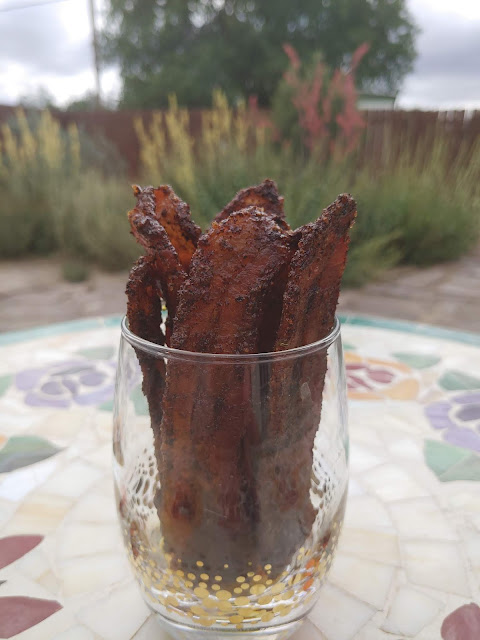Prepping the bales
Before I launch into the prepping of the bales, I wanted to share some of what is going on in other gardening and prep work...
Tomatoes,
basil and sage. The sage will be planted in the ground. The basil will
be planted in with the tomatoes. Basil makes the tomatoes taste better
and grow better, as well.
Mint
is in the pot on the left. Always plant mint in pots (even in the
ground) as it is very aggressive and will take over. Also, once it is
established it is a booger to get out. Every small bit of root will send
up new shoots. I have had this mint plant for about 6 or 7 years. It
started out in my garden (which is when I learned to never plant it in a
garden) and has been in pots since. It is great in water, tea, or whatever. On the right are pole bean seedlings.
I
thought that if I placed the seedlings in a pot, they would be less
likely to blow over. Plus there is a mint root under there, which I am
hoping will go to town with the extra water.
Seedlings transplanted into larger peat pots. We have them in the plastic tray to try to help keep them moist.
Our other seedlings. These will be planted in a couple of weeks - once the bales are prepped.
Once we got all 40 bales placed exactly where we wanted them, it was
time to start prepping them. This process involves treating them over
the course of 2 weeks with a high nitrogen fertilizer and lots of water.
Start with 1/2 cup of fertilizer on days 1, 3, and 5. Spread the granules out across the top of the bales. Water them in really good.
Early on you have to water
slowly, as the fresh bales, when dry, tend to be hydrophobic. So you
need to wet them slowly. Think of a perfectly dry sponge. It doesn't
soak up much water until it already has become damp. Your bales are the
same way. Start slowly, then once they are moist you can water more
quickly. On the even days (to this point) you will water really well, without applying additional fertilizer.

The
"plastic" you see underneath is the landscaping cloth, which (in
theory) will keep the weeds from growing up into - and through - the
bales. Keeping fingers crossed on that!
On
days 7, 8, and 9, we will apply 1/4 cup of the high-nitrogen fertilizer
and water it in really well. On day 10, we will switch to 10-10-10
fertilizer and give each bale a cup of that and (you guessed it!) water
it in well. Then we will water each day until we hit day 14, which is
when we plant. I know of people who plant on day 11, but we prefer to
let them "cook" a while longer.
I
first learned about Straw Bale Gardening from Joel Karsten's website -
and then I bought his book (coincidentally titled "Straw Bale Garden"),
and I adapted the prep schedule a bit from what he has. Be sure to check
out his website (http://strawbalegardens.com/) for lots of awesome information and ideas!










Comments
Post a Comment
I would love to hear feedback or about any adaptations you have made to any recipes.